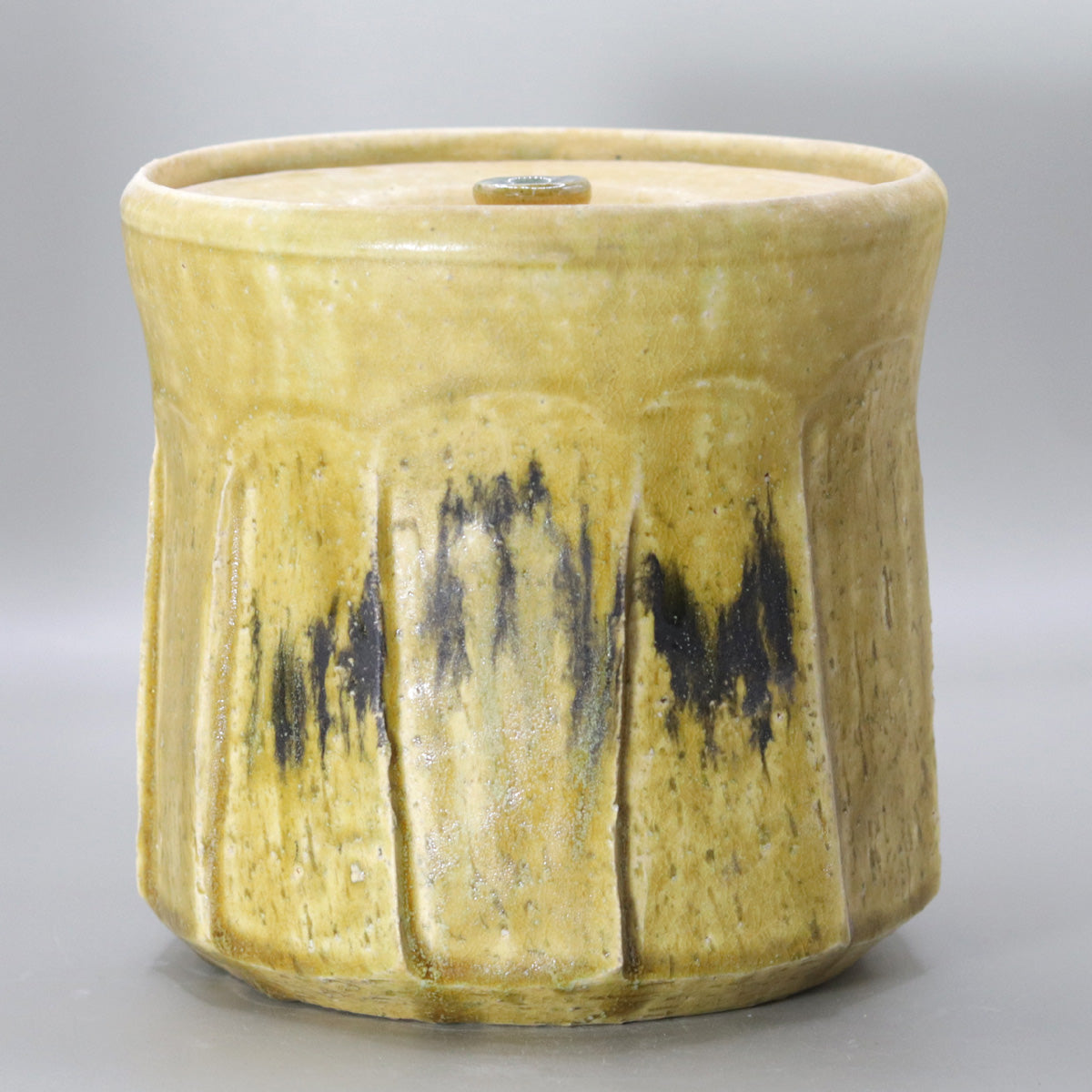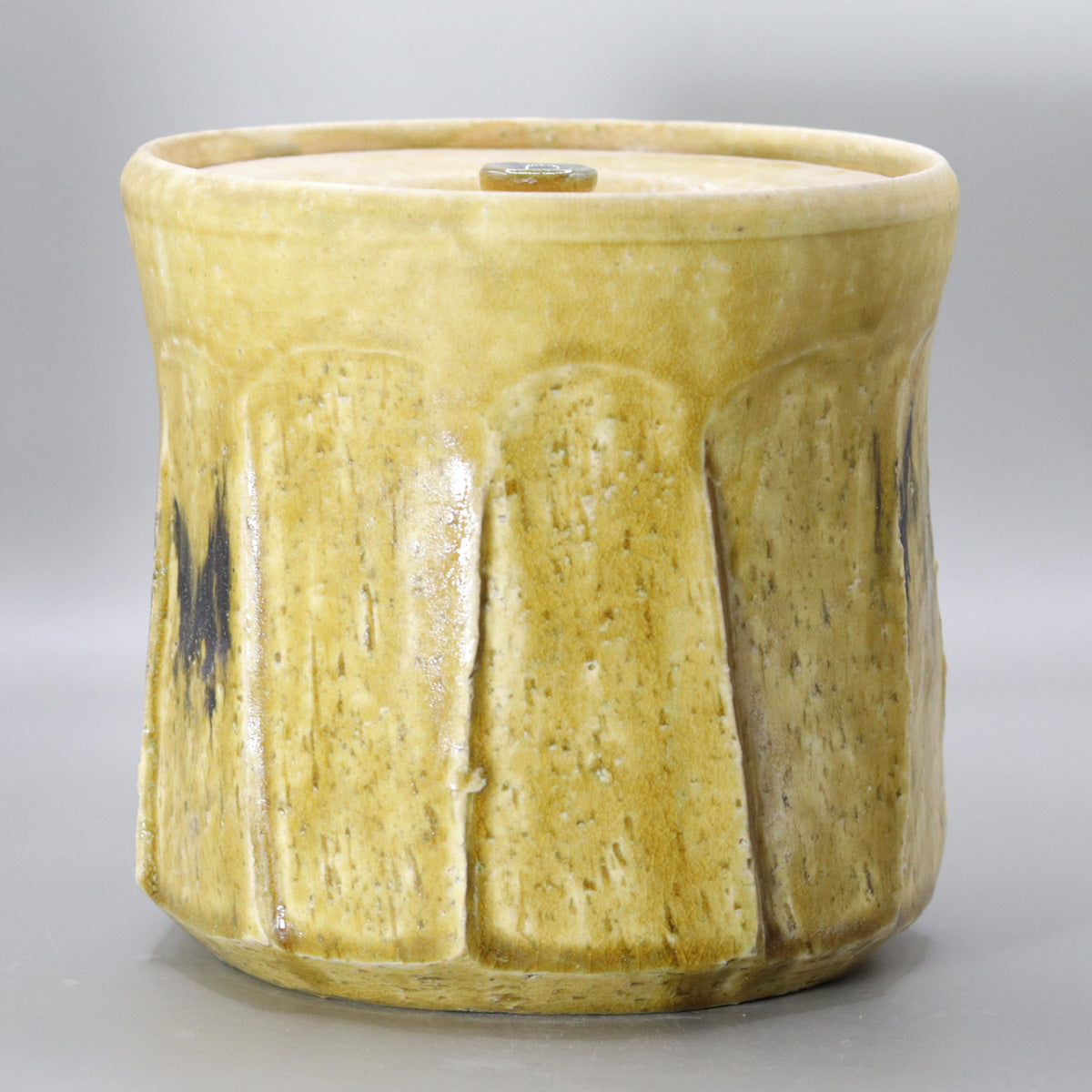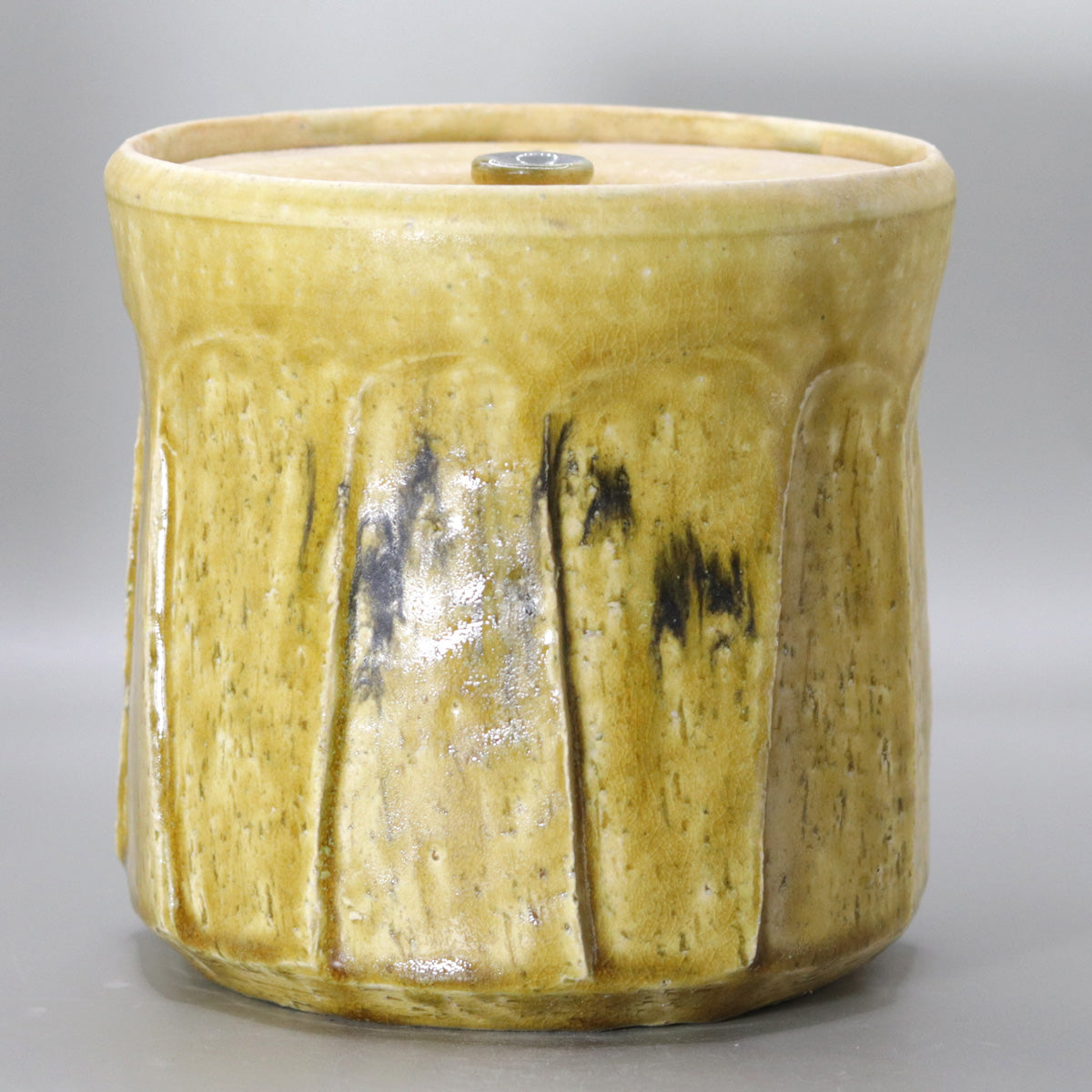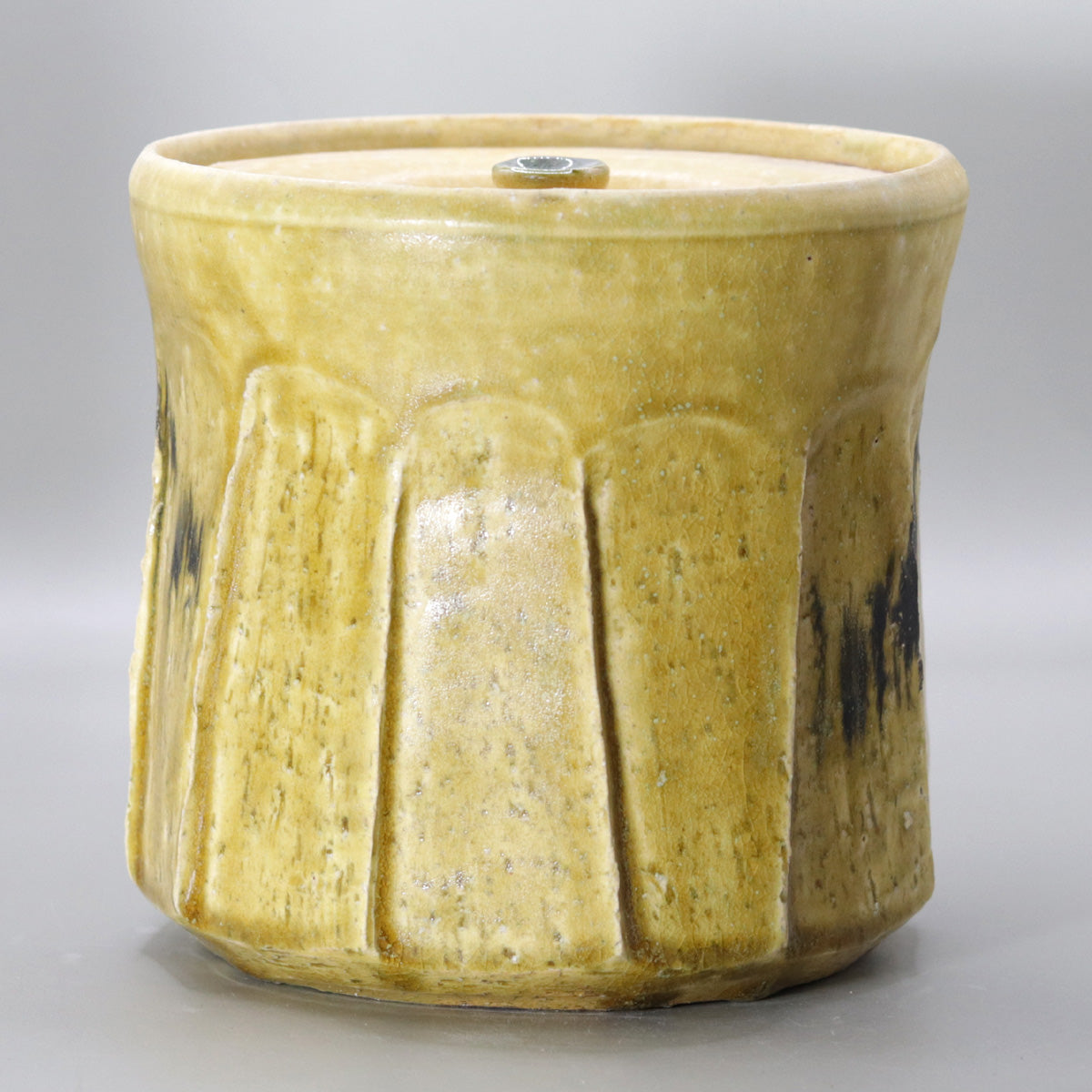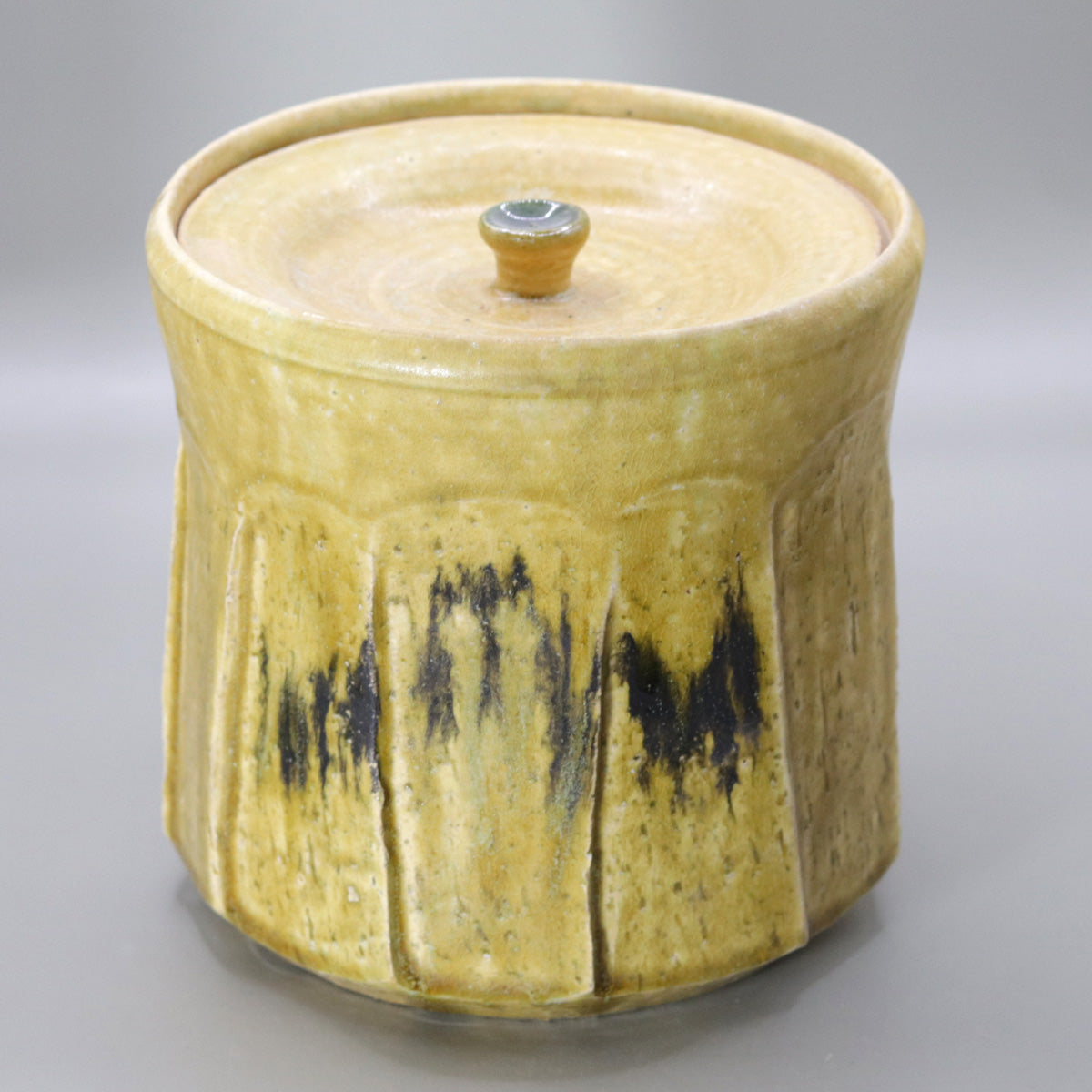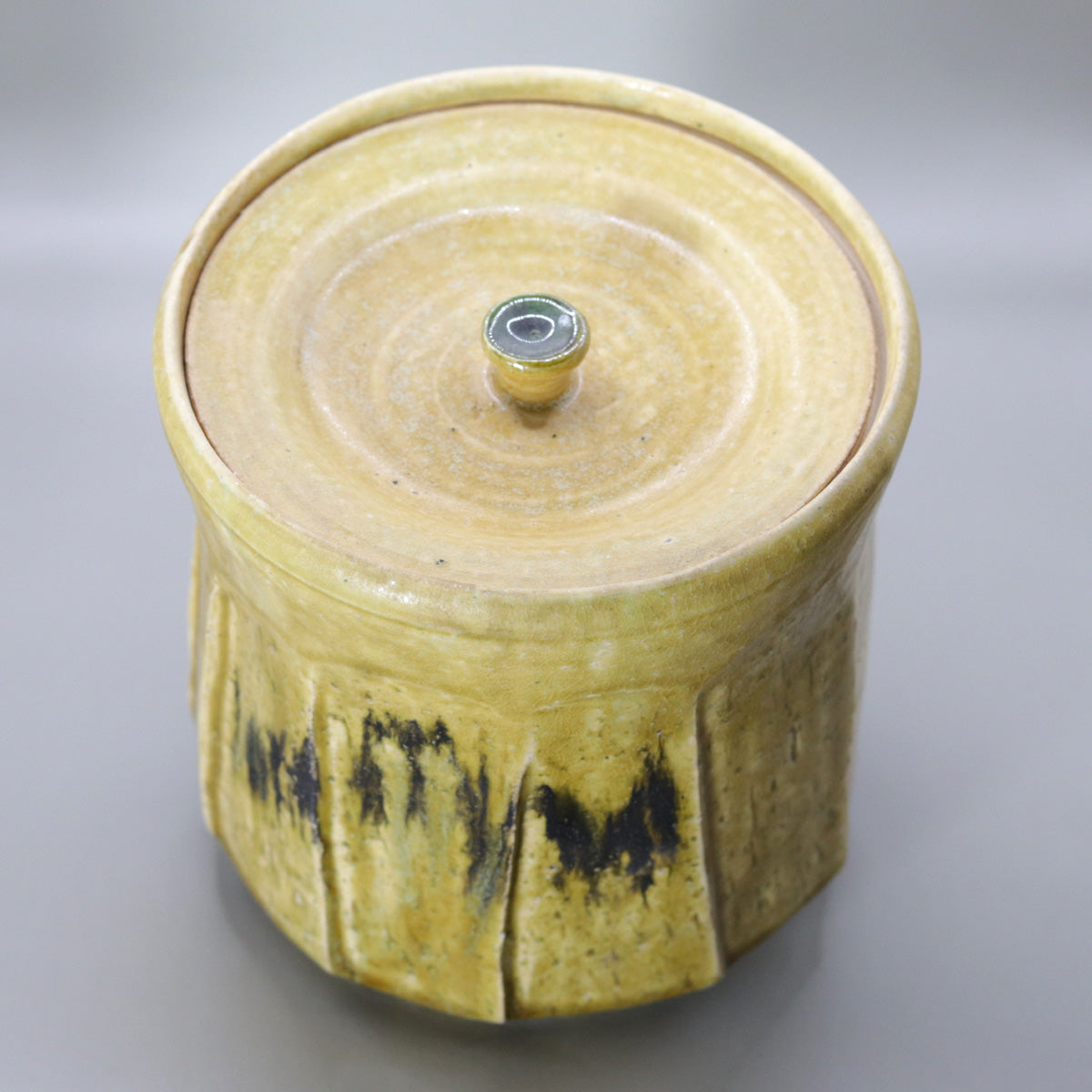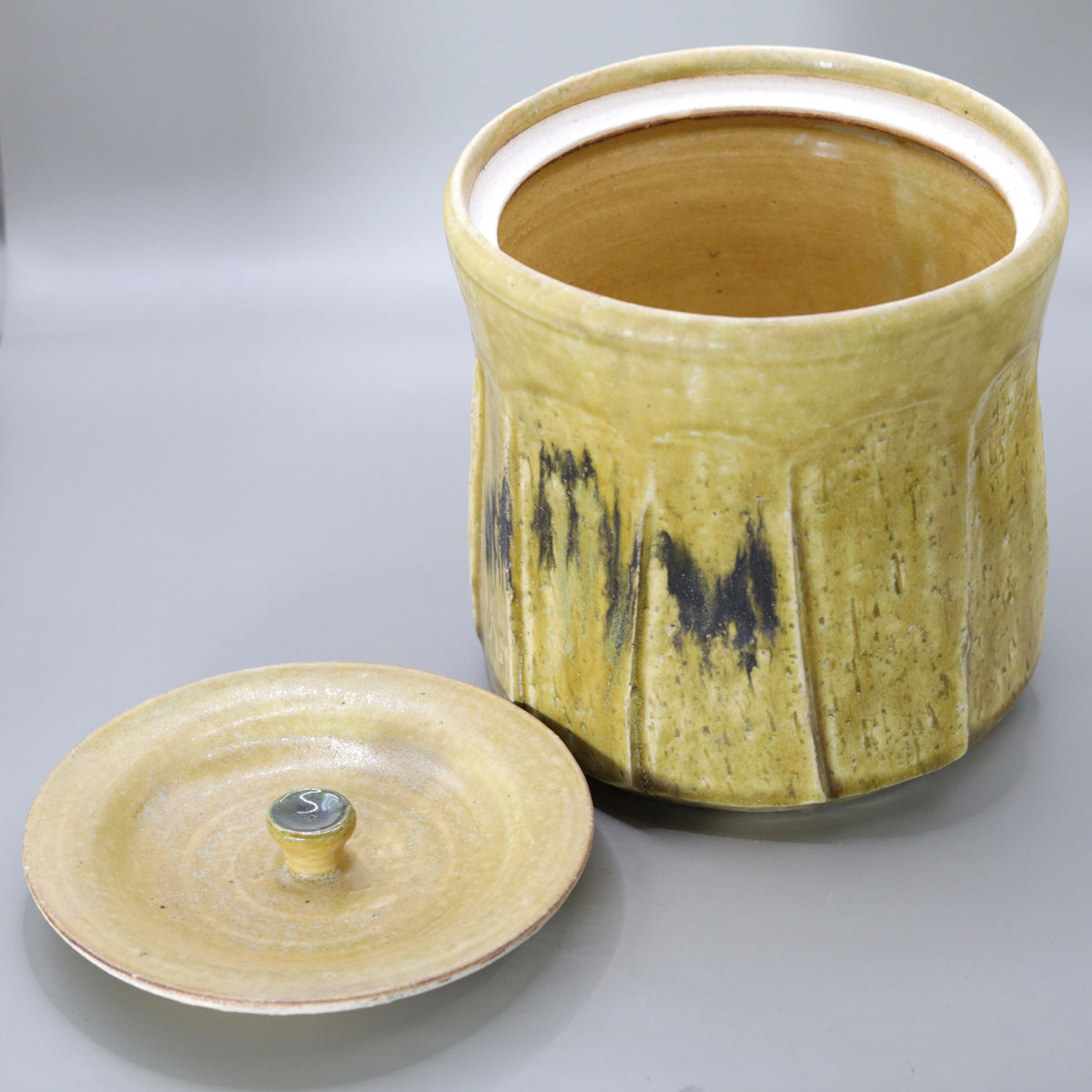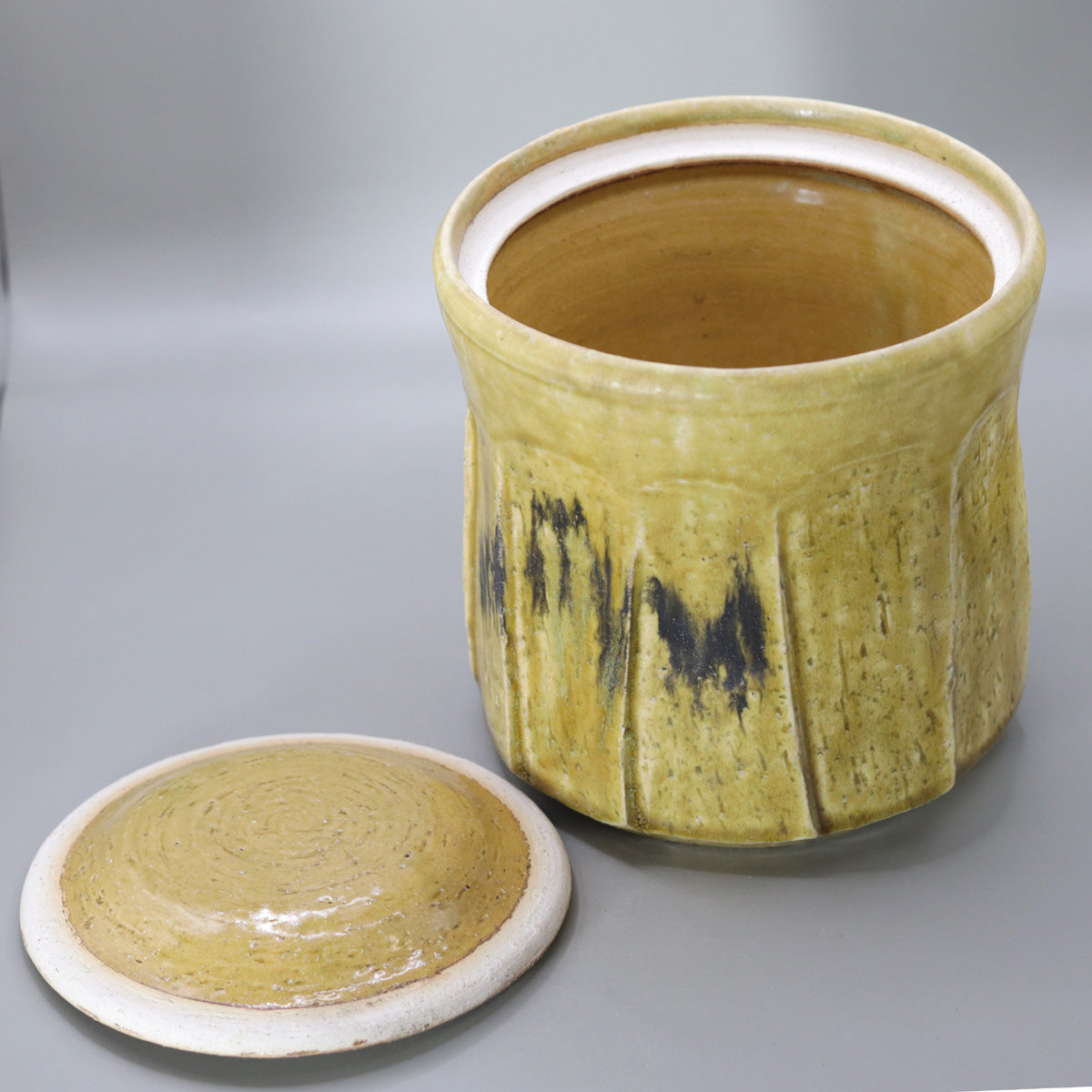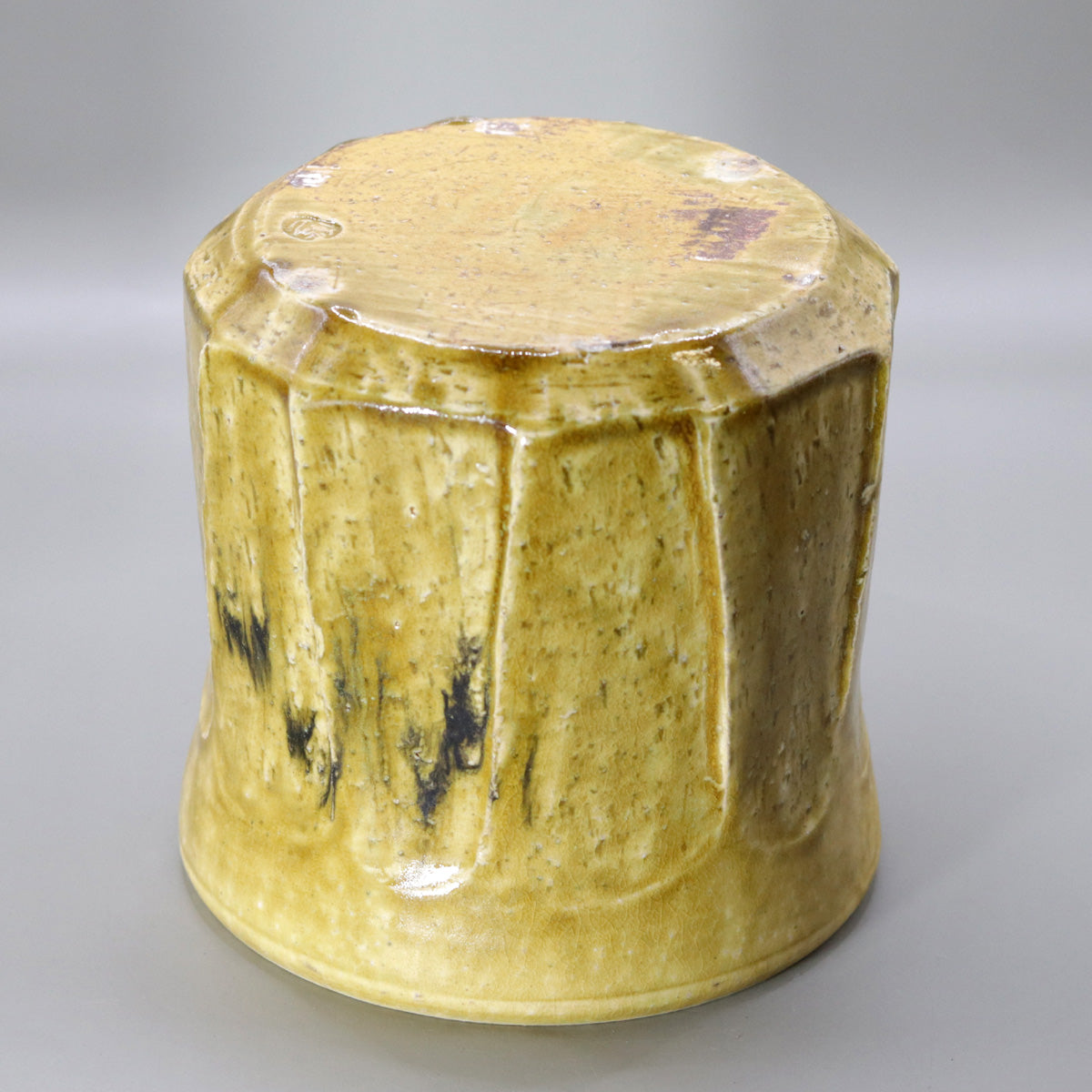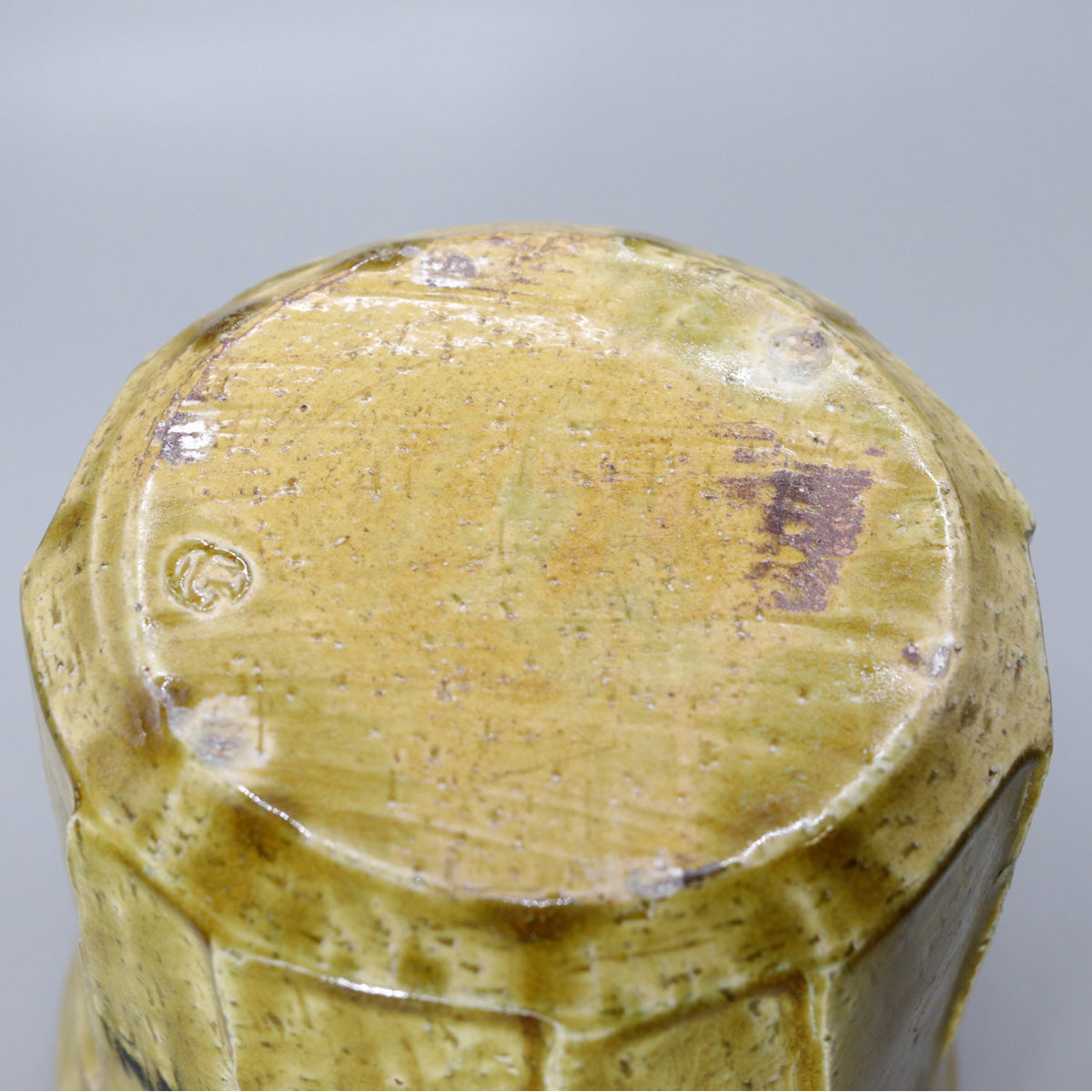Yellow-gray glazed water jar by Okada Yu
Yellow-gray glazed water jar by Okada Yu
Couldn't load pickup availability
Width: 16.8cm Height: 16.3cm
Yellow-gray glazed water jar by Okada Masaru - This water jar is filled with the scent of harvested rice and reflects the soft evening shadows on its surface.
Ⅰ What is Mizujar? A key tool that brings moisture to the tea ceremony
Mizusashi (water pitcher) is a vessel used to add water to the tea kettle during the tea ceremony and to store water for purifying the tea bowl and tea whisk. After the Momoyama period, when wabi-cha tea was established, it became an important tool that constitutes the scenery of the tea ceremony, along with the tea bowl and the kettle.
Shape and placement : Cylindrical is the basic shape, but there are also square, drum, gourd, etc. During the tea ceremony, the placement changes depending on the season and the tea ceremony, such as placing it next to the guest during the furo-jibun, and in the center of the tea ceremony tatami mat or on a shelf during the ro-jibun.
Type of lid : There are two types of lid: tomobuta, which is made from the same material as the pottery , and nuributa, which is made of wood with lacquer applied . This piece is a tomobuta with the same glaze finish.
Kaigu : Refers to a display style in which a water jar, ladle stand, water pitcher, and lid rest are arranged together; the water jar is the central piece of the setting, expressing a sense of the season and elegance.
II. Scenes of Yellow-Grey Glazes: A Tribute to Heian Period Grey-Glazed Pottery
Yellow ash glaze is a type of ash glaze that uses wood ash as a flux, and is characterized by a gentle yellow-brown color due to oxidation firing, with patches of verdigris and black from the straw ash seeping through in places.
Lineage of ash-glazed pottery: Ash-glazed pottery began in the Sanage kilns of the Heian period and spread throughout Japan. At the time, it was also called "shirashi" and was prized as a luxury item for aristocrats and temples, but as time went on, it spread to the common people as well, and is considered the "beginning of glazed pottery" in the history of Japanese ceramics.
The connection to Kiseto : Kiseto, which flourished in Owari Seto from the end of the Muromachi period to the Momoyama period, is also based on the technique of ash glaze. The soft green tea of this work combines the warmth of Kiseto with the simplicity of Heian ash glaze.
The charm of bokukei : The black color that runs along the vertical ridges of the body is a natural product of wood ash blending with the iron in the glaze. It recalls the "scenery of falling ash" seen on Heian ash-glazed jars, and adds deep shadows to the surface of the vessel.
III. Shape and Design: A powerful figure reminiscent of rice bundles and bamboo joints
The mouth of this piece is slightly curved outward, providing a sense of stability as it gently receives the lid. The diameter of the mouth is not too wide, and the dimensions are just right to easily scoop water from the kettle with the ladle, so the ladle can be handled naturally and steadily, even without a lid rest, making for a smoother movement.
The eight-sided vertical ridges run around the entire circumference of the body, creating a rhythm reminiscent of bamboo joints or rice bundles. The glaze pools in the valleys of the ridges, highlighting the contrast in light and shade, adding depth to the beauty of the form, while also providing the practical benefit of providing excellent grip to prevent slipping when reheating the pot.
The lid is made with the same yellow-gray glaze as the body, creating a unified look. The modest small knob in the center is a simple accent, and when the lid is removed during a meal, it blends in with the body and gives off a warm atmosphere. This, combined with the steam rising from the inside, will bring a subtle sense of familiarity and comfort to the guests.
IV. Tea ceremony combinations: Mizujar reflecting the harvest season
Autumn Night Tales
Matching tea bowls : Dark colors such as Kuroraku and Setoguro
Theme : The ink landscape reminiscent of bonfires and wicks floats faintly in the darkness, creating the lingering feeling of the harvest festival.
First tea ceremony of the new spring
Matching tea bowls : White glaze, celadon, or light green Shino
Theme : The yellow glaze, reminiscent of sunlight shining on the barren winter earth, symbolizes auspicious signs for the New Year.
Flowering season cut
Matching tea container : Gorgeous design with lacquer and cherry blossom lacquer
Style : The color of the petals stands out against the soft yellow, and the ridges of the stems suggest the vigor of the young bamboo.
Ⅴ Masaru Okada's creative philosophy: Reflecting the colors of the land in his pottery
Masaru Okada, who was born in Gojozaka, Kiyomizu, Kyoto and has his own kiln in Sumiyama, Uji, believes in translating the shadows of the mountains and the colors of the countryside that he sees every day into the shapes of his vessels.
Yellow-ash glaze conveys "fruitfulness" and "warmth"
The shadows of distant mountains and the rhythm of autumn winds are expressed through the ink landscape and ridges .
The sturdy cylindrical body embodies a sense of security regarding abundant harvests.
If placed at a tea ceremony, it will gently capture the gaze of guests while also inviting you to the natural flow of time.
This yellow- gray glazed water jar combines the simplicity of the ancient kiln ash glaze with the refinement of Kiseto, and is filled with a gentle golden hue reminiscent of autumn rice fields. Stroke it with your palm and you will feel the warmth of the glaze, and the shadows of the ridges will reflect the swaying mountain silhouettes in the setting sun. Please use this jar for many years to come as it adds the quiet joy of the harvest season to the once-in-a-lifetime encounter of the tea ceremony.
Share
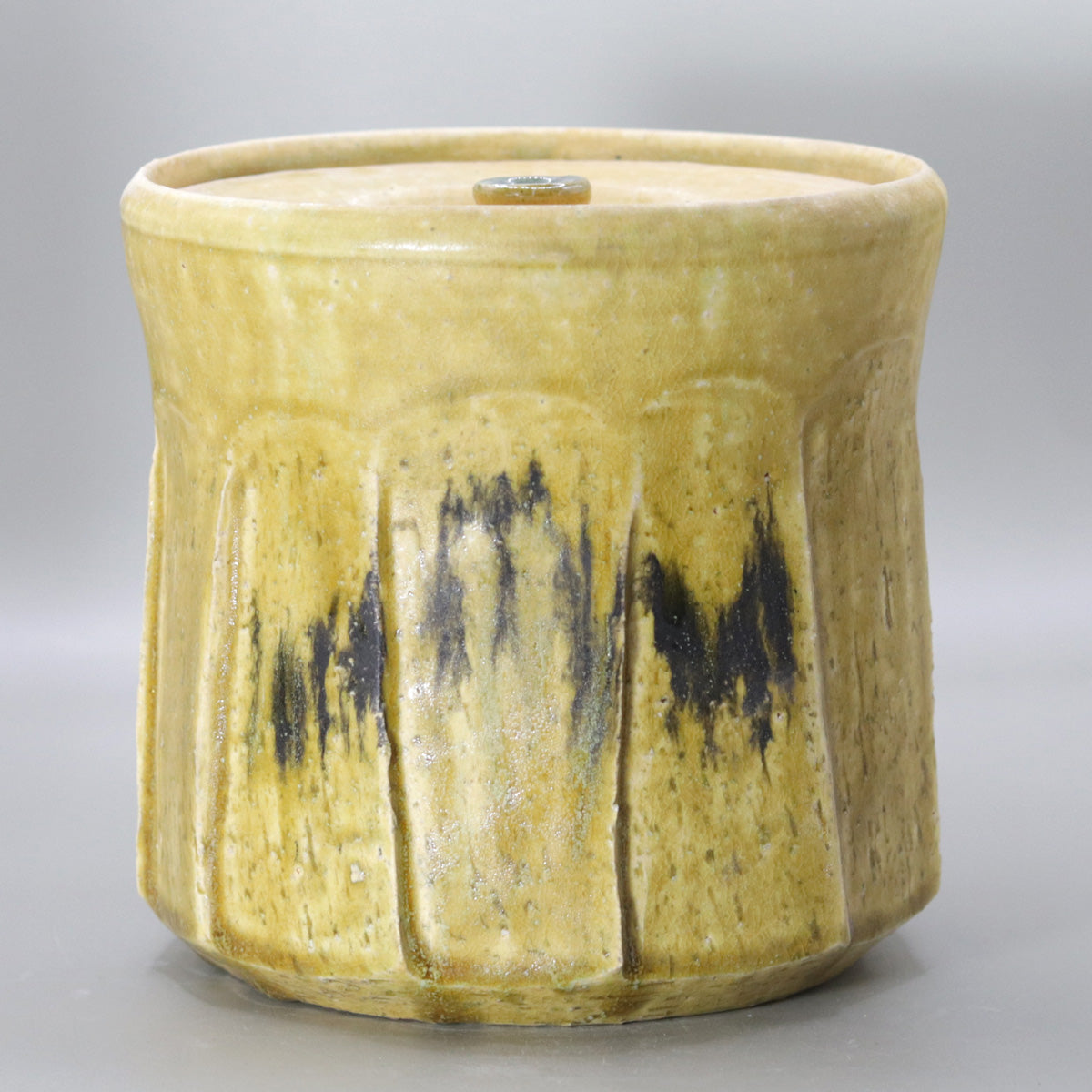
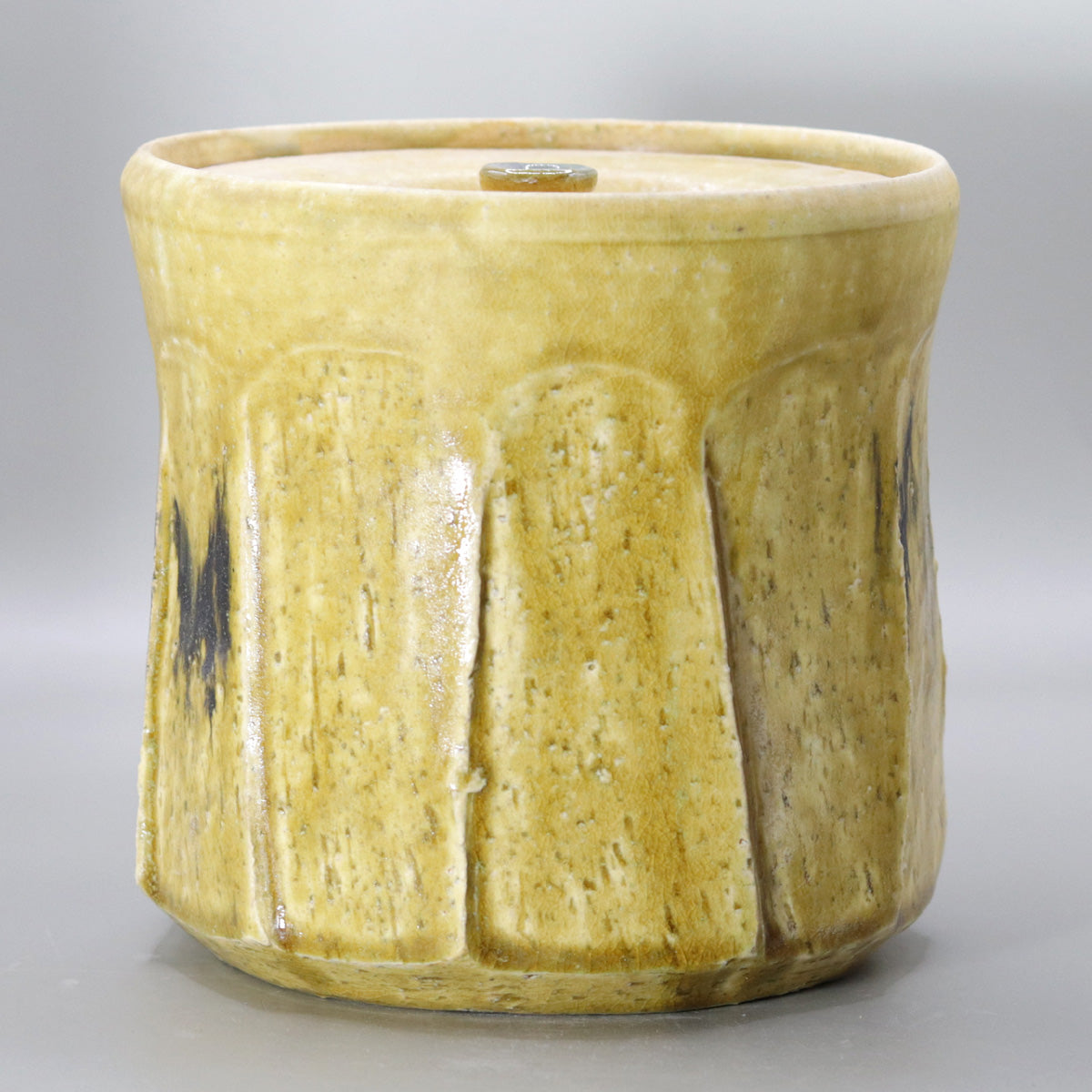
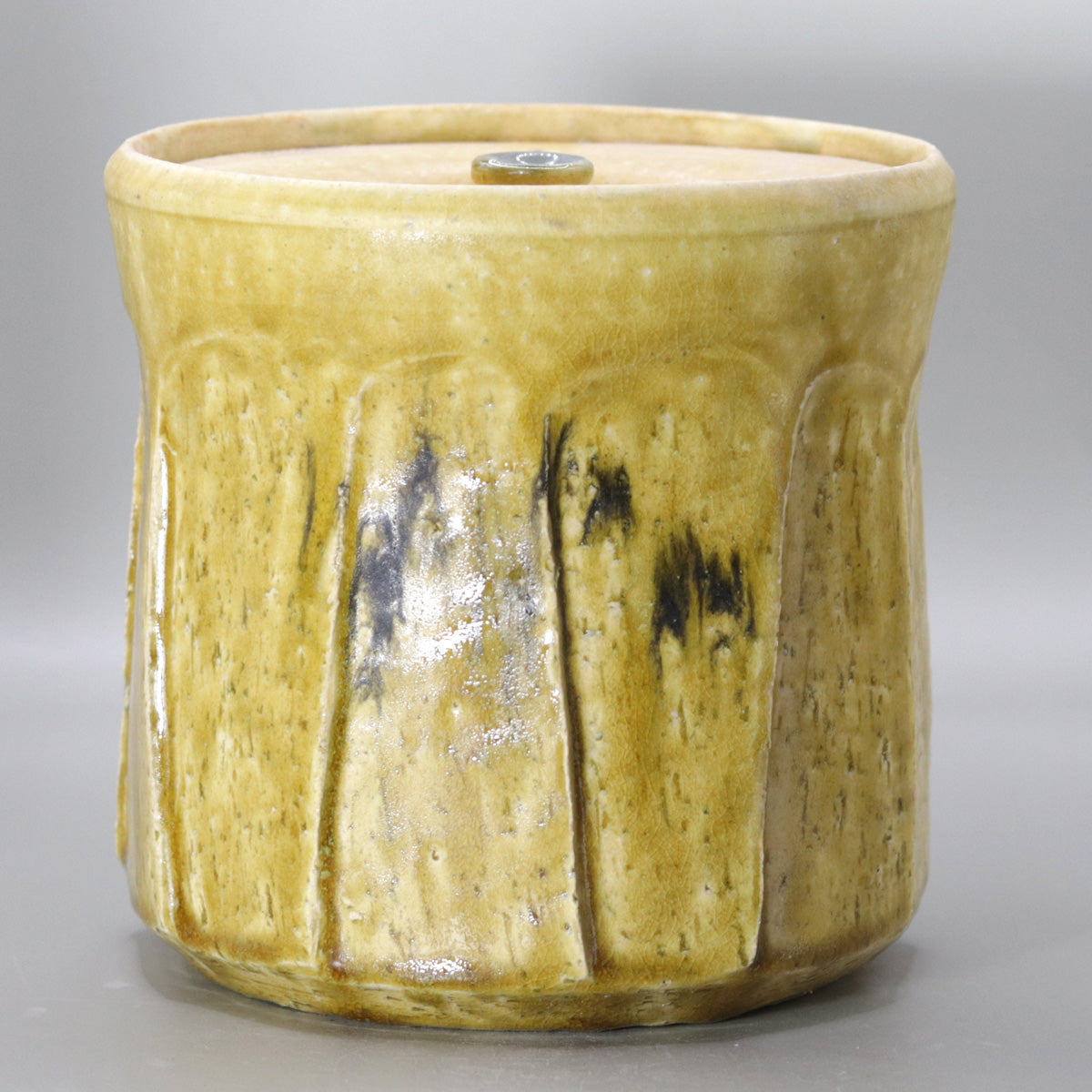
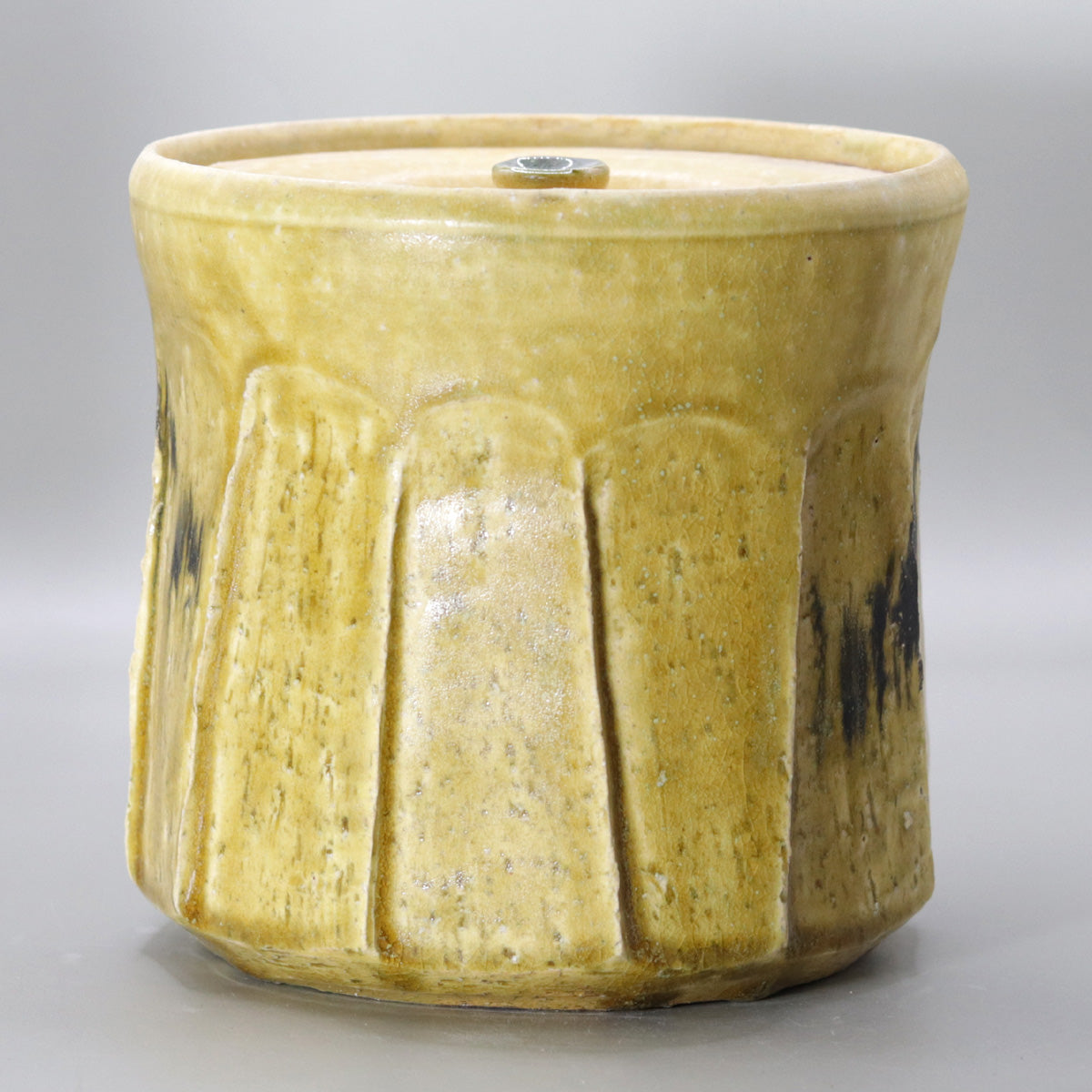
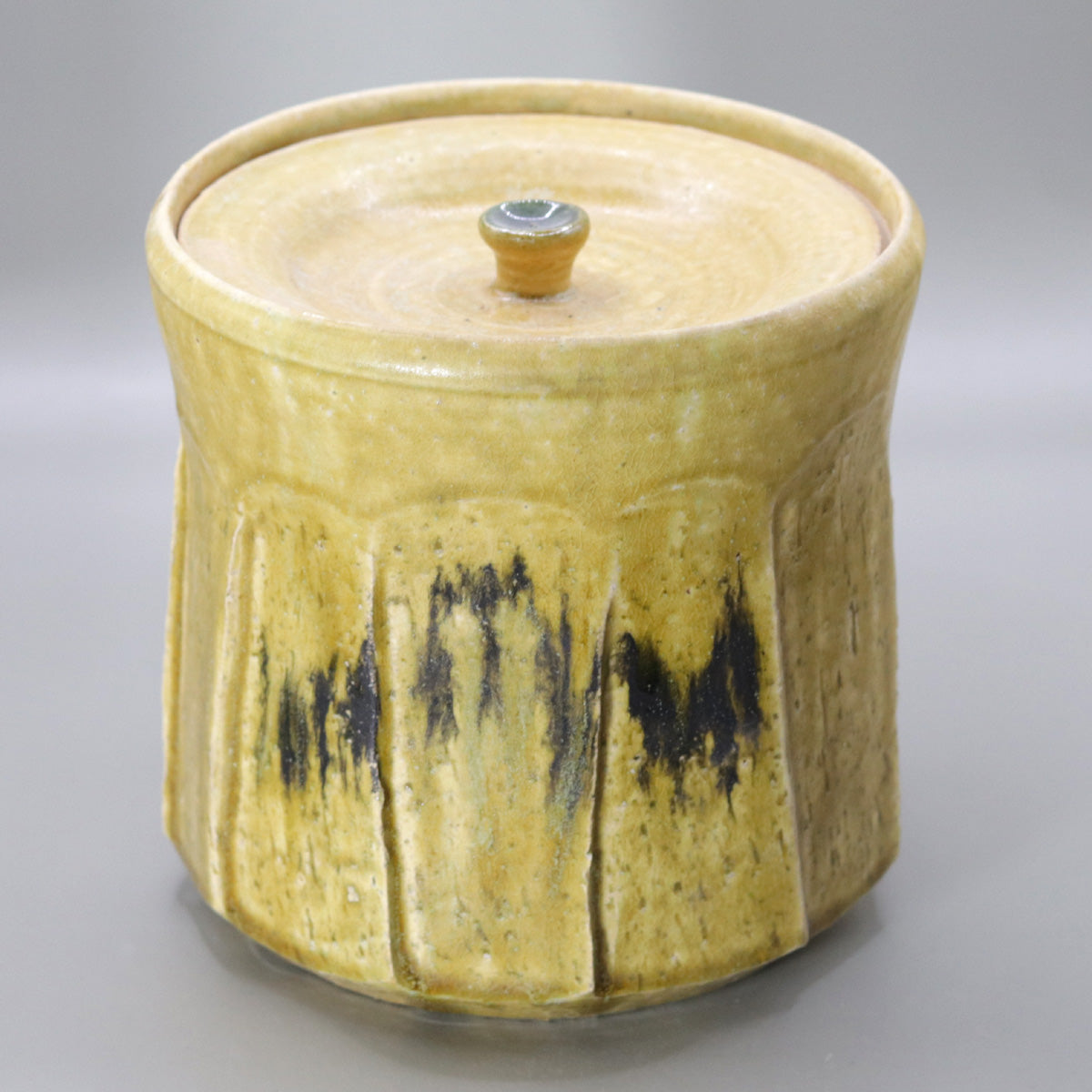
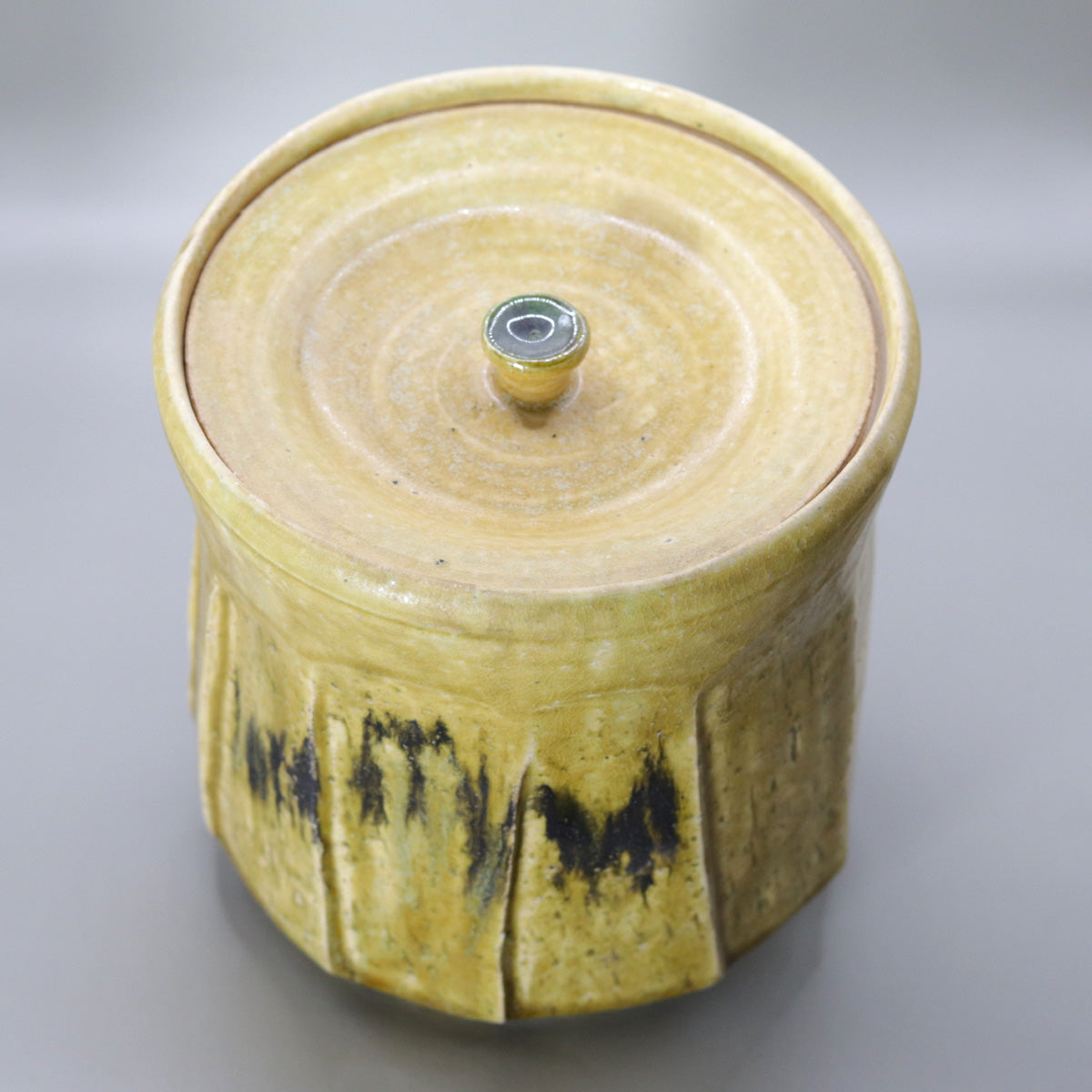
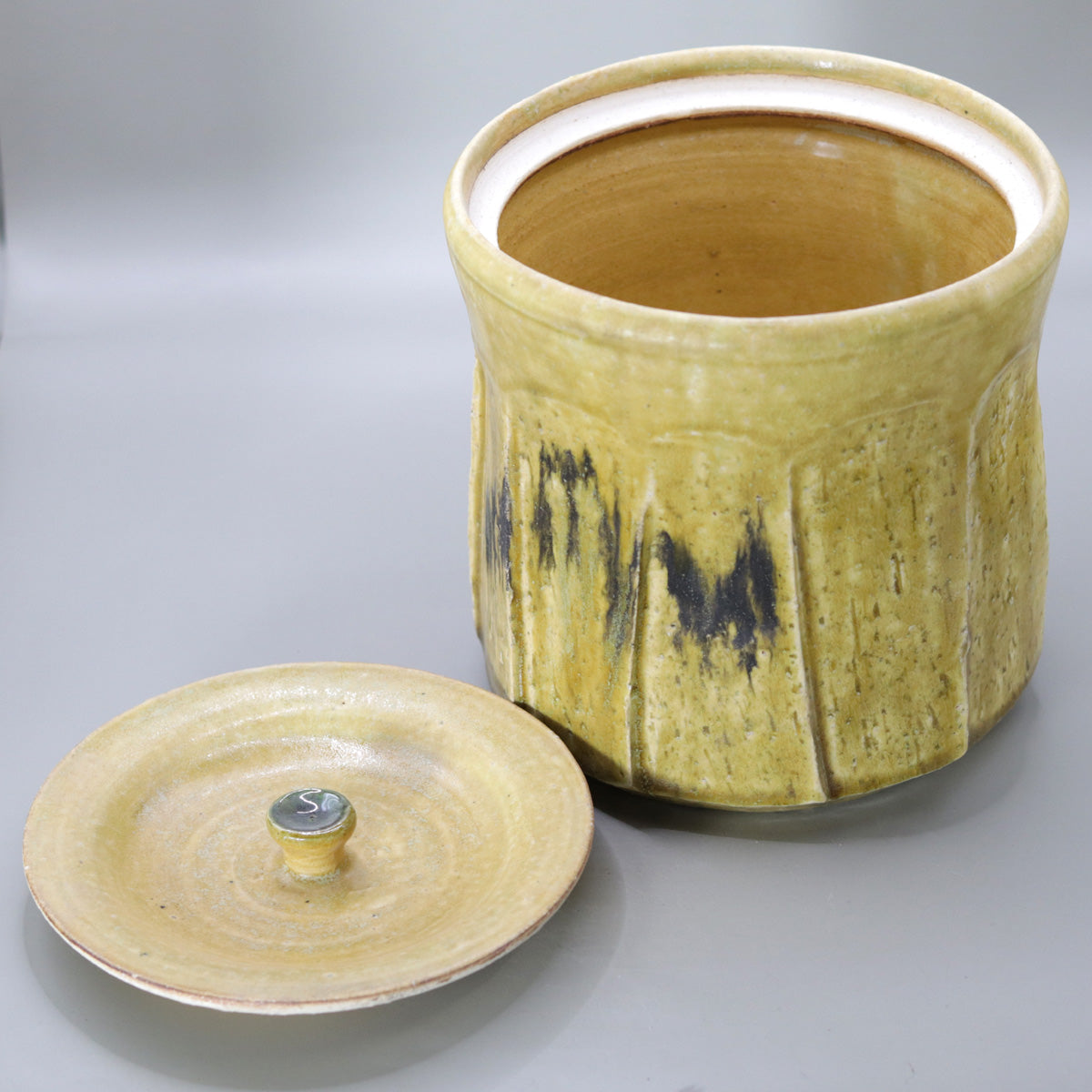
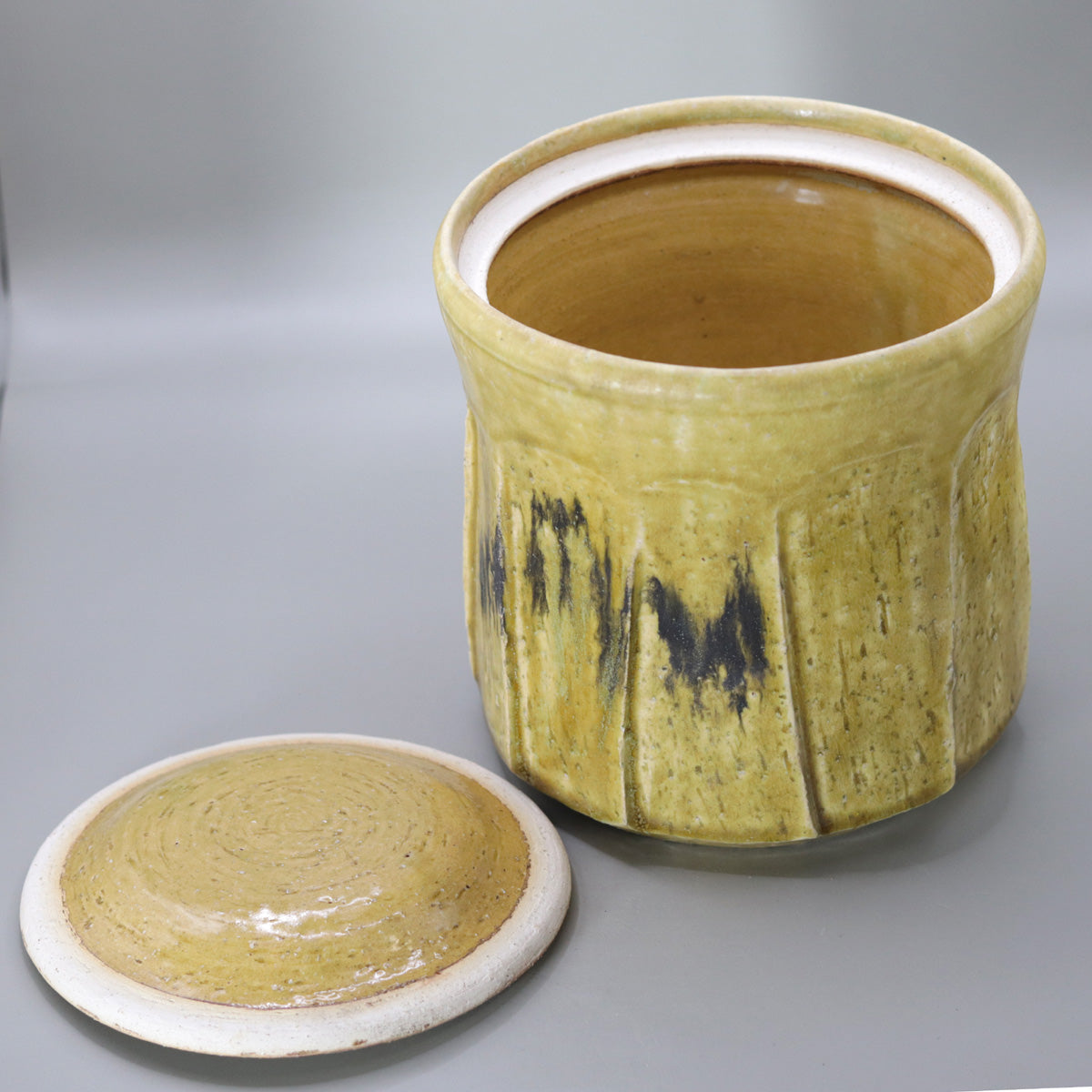
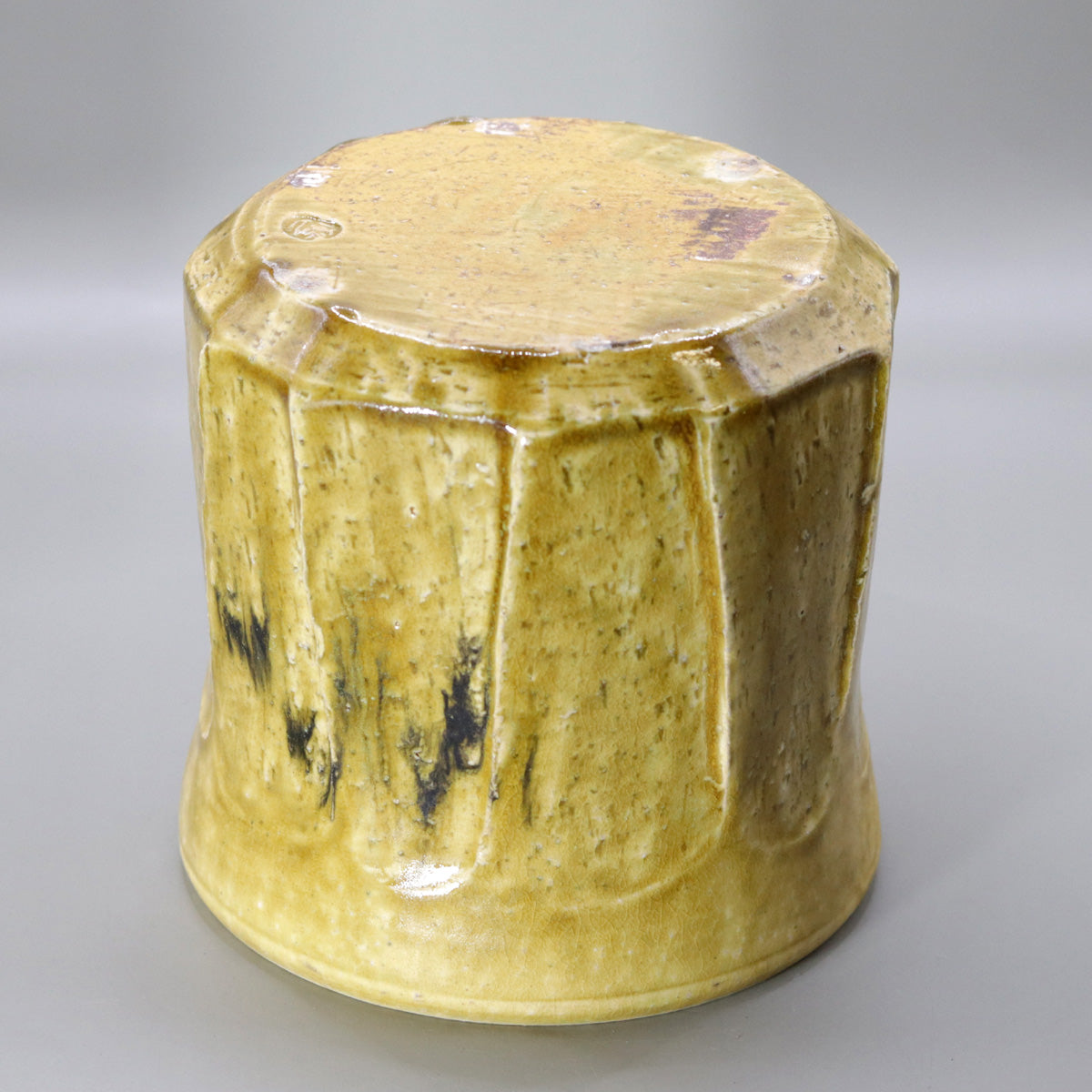
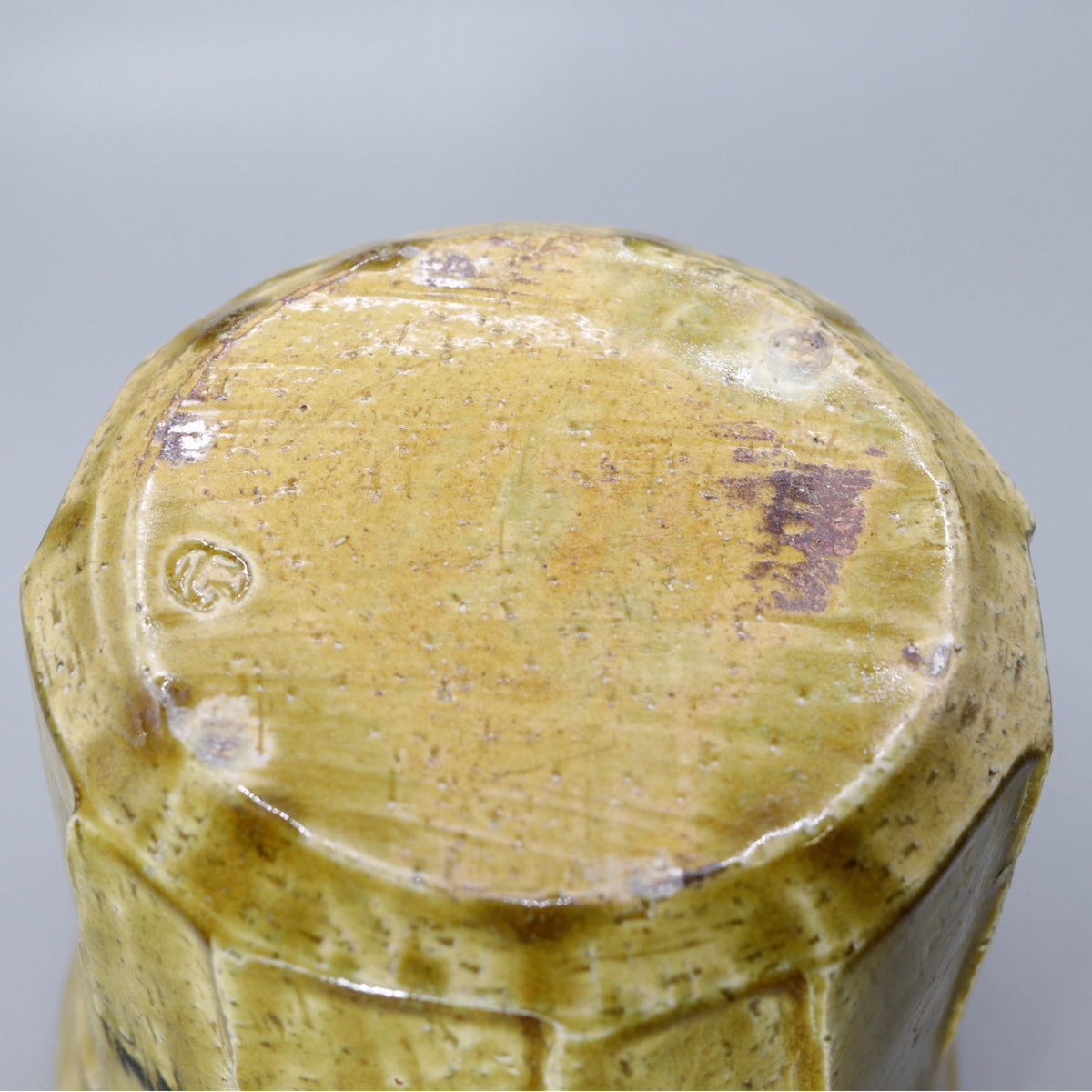
Multi-Column
-
[I will send it to you quickly and carefully]
We carefully package each product in a way that suits it best.
Also, delivery times vary depending on the piece (vessel, etc.).
Items that already come with a box will be shipped within 1-3 days of the order date.
For items that require a box to be made after your order, it will take approximately 30 days for production to be completed and then shipped.
In either case, once we have confirmed your order, we will contact you by email to inform you of the delivery date.
-
[Requests when purchasing pottery]
Even products that look the same may differ slightly in color, shape, size, etc.
The way the glaze is used, the power of the kiln, the firing method, the season, and the humidity also affect the appearance of the pottery.
Please understand the individuality of each piece of pottery and enjoy the unique warmth of handmade.

